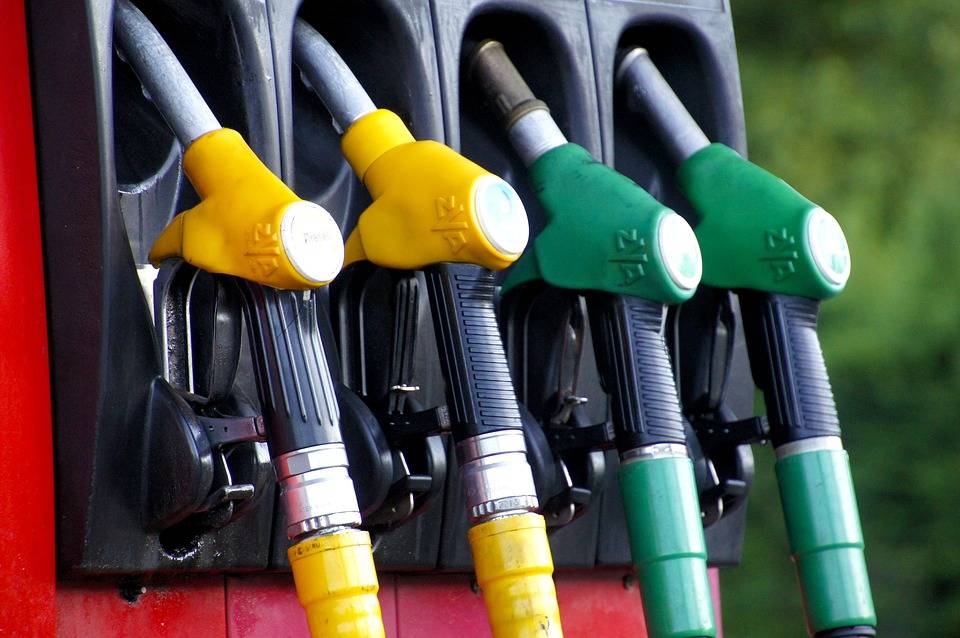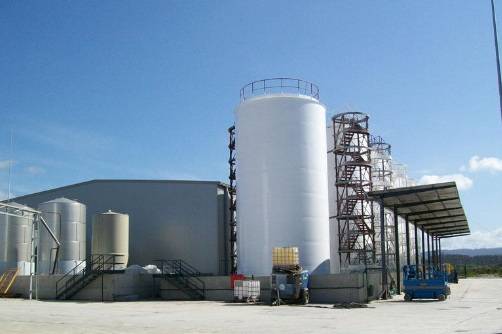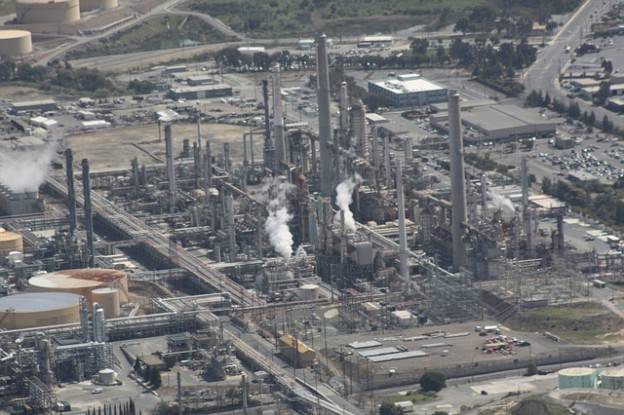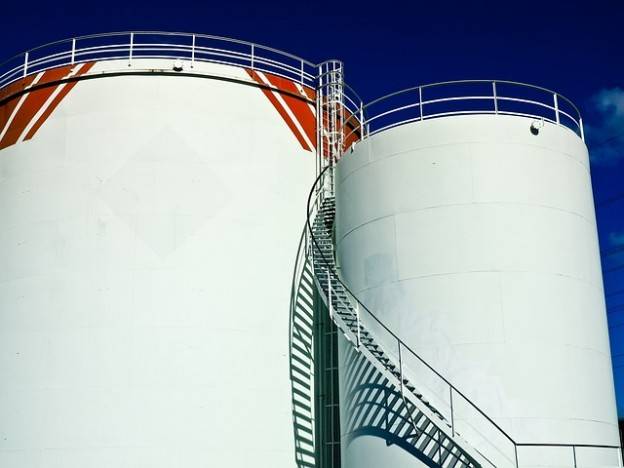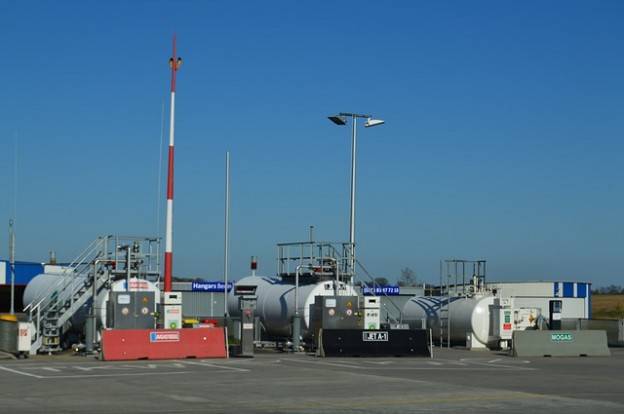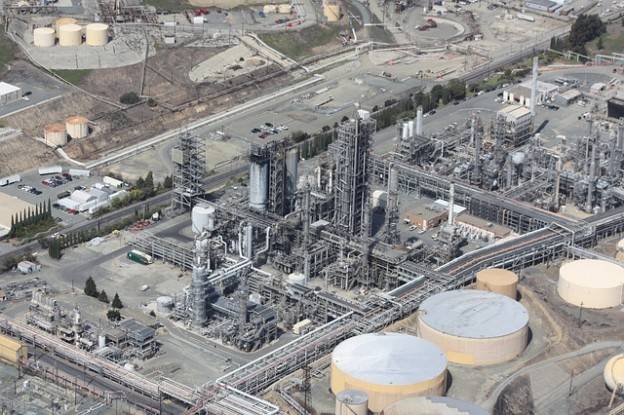HFO is a very chemically complex mix of high molecular organic, heteroorganic and metal-organic compounds. Structurally, HFO is a multi phase dispersed system. The dispersed phase particles include paraffin hydrocarbons, carbenes and carboids, solid mineral particles, water globules, gas bubbles etc. Settling of dispersed particles and formation of solid sediment complicates all stages of transportation, storage and burning of HFO. Carboids and minerals are abrasive to pumps, valves and nozzles. Water globules complicates operation of HFO facility, negatively impacts combustion and may lead to flameout. Presence of harmful substances in HFO generates derivatives, corrosion and contamination and reduces heat efficiency. To reduce the negative impacts of usin HFO, it must be specially treated at an oil refinery or immediately before burning. There are three methods of treatment: hydromechanical, physical and chemical.
Hydromechanical treatment is done in special systems (rotary, jet, vibrational etc), which allow to create a fine mix of HFO with viscous sediment and water. The HM method is useful when burning cracking HFO or HFO with high water content. As a result of the treatment, water and HFO mix to microemulsion. As water boiling temperature is significantly lower that of HFO (280…320°С), when HFO enters the combustion chamber, the emulsified water evaporates, which leads to microexplosions of HFO droplets and further atomization. The flame is distributed more evenly, combustion is accelerated and becomes more complete, temperature range is more uniform, temperature maximum in the combustion area is reduced, therefore emission of thermal nitrogen oxides is reduced by 30-40%. The amount of emulsified water in HFO is recommended at 6 – 12% with droplet size 10 – 15 micron.
Physical methods include processing of fuel with magnetic, electric, thermal and other physical fields to increase its dispersion, stability, and, ultimately, improve combustion.
Salts removal involves water rinsing of HFO. Fresh water is injected into the HFO, water-fuel emulsion is created, then the rinsing water saturated with salts (mostly of alkali metals) is removed by centrifuges. Abroad (Pegrolant company in the USA) water is removed from HFO electrostatically directly in fuel tanks.
The chemical method involves various additives. There are a number of additives serving different purposes.
Depressors improve flow. Copolymers of ethylene and vinylacetate are used as depressants.
Dispersion additives prevent formation of tar sediment, increase combustion rate. Dispersion and anti-smoke additives are compounds of Mn, Be, Cr etc (combustion catalysts), compounds of Ba and Ca, alumina silicates. The latter accelerate thermooxidation cracking of the fuel, which positively affects combustion, reduces corrisive activity of smoke gases; alumina silicates are not yet used in energy production.
Anticorrosive additives are compounds of Mn, Al, Bl, Be etc. They react with corrosion and adhesive components of combustion products and render them inert. The outside of the boiler becomes covered with soft easily removed sediment, metal corrosion rate reduces drastically.
The additive, coming to the power plant, is unloaded into special tanks, where actual operating solution is prepared. The solution is then directed to special storage tanks for liquid additive. From these tanks, a portioner pumps the liquid through filters to second stage HFO pumps (with ejection type blenders).
Some of the widely used additives are based on Mg, Mn and Al dispersed in oil.
Pressurizing the fuel before combustion
Pressure of liquid fuel is selected based on the required dispersal of the fuel for a given nozzle efficiency. Pressure of HFO before the nozzles is chosen based on the required nozzle power. Fuel pressure before the nozzles can be low (less than 0.7 MPa), medium (less than 3.5 MPa) and high (over 3.5MPa). The required pressure is reached by using pumps of various types and purposes.
Gear pumps are used to pump HFO colder than 80°С and are used as circulation and main pumps in industrial boilers; feed from 0.22 to 9m/hour, pressure 0.6 to 2.5MPa.
Screw pumps (three screws) are used to pump HFO colder than 100°С at various HFO facilities or industrial boilers as main pumps; feed 0.45 to 6.84 m3/hour, pressure 2.5 to 4 MPa.
Centrifugal pumps are designed for pumping of HFO colder than 80°С and are used at thermal power plants as main pumps and first raise pumps, feed 35 to 560 m3/hour, pressure 0.7 to 3.7 MPa.
Heating HFO before nozzles
Before injecting liquid fuel into the boiler, it is heated for proper viscosity. The temperature of heating is defined by type of HFO and atomization method (see table1).
Table 1
HFO heating temperature before nozzles, °С
|
HFO type
|
Mechanical nozzles
|
Steam mechanical nozzles
|
Rotary and steam atomization nozzles
|
|
100
|
150 (135)
|
125
|
100
|
|
100 В
|
125
|
115
|
—
|
|
40
|
120
|
110
|
90
|
|
40 В
|
110
|
100
|
—
|
|
F
|
80
|
—
|
80
|
Steam goes to HFO heaters (Fig 2, pos 7) from turbine bleed or directly from the boiler at 1.6Mpa at up to 300°С (saturated or somewhat overheated).
Figure 5 shows the design of a double pipe heater, used in HFO facilities.

Fig. 1.5. Double pipe HFO heater.
Atomization of liquid fuel and creation of fuel-air mixture.
These stages are critical in fuel preparation for combustion. Quality of atomization and mixture creation directly influences economy and reliability and the combustion process in various modes of operation. Atomization of liquid fuel is done in nozzles, fuel and air mixture is created in burners of various types and designs.
The main nozzle types used in energy production are mechanical and nozzles with atomization media. Mechanical atomization involves pushing the fuel through a small orifice (1…3 mm) at significant pressure (1.0…2.0 MPa). The atomizing part of a centrifugal nozzle (head) is shown in Figure 6. It consists of three main components. In the disk 4, the fuel is separated into small streams, in the disk 5 the stream vortices are created, and the fuel is atomized in the nozzle inset 6.
Figure 6. Mechanical nozzle head: 1 – head inset; 2 – stop nut; 3 – covering nut; 4 – distribution disk; 5 – vortex disk; 6 – nozzle inset.
Steam or air kinetic energy cause atomization in steam or pneumatic nozzles. E.g. in stream nozzles as shown in Figure 7, HFO is atomized by direct influence by steam kinetic energy and ejection.
Figure 7. Stream nozzle: 1 – plug; 2 – gasket; 3 – atomizer; 4 – steam collector; 5 – body; 6 – fuel shaft; 7 – steam shaft.
Steam and pneumatic/mechanical nozzles atomize fuel by simultaneous influence of both mechanical and stream (pneumatic) swirlers. Such nozzles are double-shaft (atomization agent influences the fuel when the fuel exits the nozzle into the furnace (Fig.8) or double-shamber (streams of fuel and atomization agent interact inside the nozzle) with one outlet.
Figure 8. Steam/mechanical nozzle head: 1 – covering nut; 2 – distribution washer; 3 – fuel swirler; 4 – steam swirler.
In rotary nozzles fuel is atomized and ejected into the furnace by rotating cylinder (Figure 9). The fuel enters the nozzle through hollow pipe, then to the wall of the cylinder, where it is distributed as film, which cuts off at the cylinder’s edge. Additional air (10…20% of combustion air) is fed to the glass to further influence the fuel film. The rich mixture of air and fuel drops enters the furnace.
Combustion efficiency depends on atomization quality, which is characterized by the droplet size distribution, mean droplet diameter, spray angle, stream range and stream concentration, i.e. the amount of liquid passing through a unit of stream cross-section area in a unit of time.
Fractional constitution of drops in the stream may be presented as a normal Gaussian distribution dependency.


Figure 9. Rotary nozzle head: 1- fuel feed pipe; 2- hollow rotating shaft; 3 – body; 4 – feeder; 5 – rotating atomization cylinder; 6 – air swirler.

Figure 10. Drop distribution frequency curve.
Graphical representation is shown in Figure 10. The curve demonstrates that drop size distribution is quite uneven.
